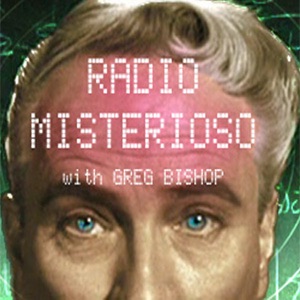
Radio Misterioso
[email protected] (Greg)
In-depth conversations on the paranormal alternating with weird music. Live on Sundays 8-10 PM PST @ killradio.org.
- 1 hour 46 minutesDiana Walsh Pasulka – Encounters
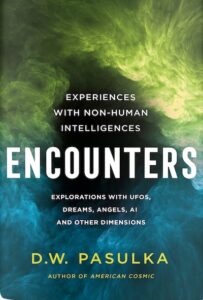 Due to be released in November, Dr. Diana Walsh-Pasulka’s second book on the UFO subject is to me is a portrait of the UFO phenomenon as manifested personally among those who are interested in the subject. In this way, it is more of a teaching text than a narrative, as her first volume, American Cosmic was. It examines personal truths about the direct experiences of those who do not get on the news or attend UFO conventions, and how this can tell us more about these encounters on an individual level, where I believe the best understanding of this mystery lies. It also stands as a snapshot of where the subject stands right now; how it is seen and internalized by witnesses, how it is mediated by those with agendas or misunderstandings, and how it might be eventually accessible to all to help us evolve and survive.
Due to be released in November, Dr. Diana Walsh-Pasulka’s second book on the UFO subject is to me is a portrait of the UFO phenomenon as manifested personally among those who are interested in the subject. In this way, it is more of a teaching text than a narrative, as her first volume, American Cosmic was. It examines personal truths about the direct experiences of those who do not get on the news or attend UFO conventions, and how this can tell us more about these encounters on an individual level, where I believe the best understanding of this mystery lies. It also stands as a snapshot of where the subject stands right now; how it is seen and internalized by witnesses, how it is mediated by those with agendas or misunderstandings, and how it might be eventually accessible to all to help us evolve and survive.Diana spent many months talking to the people she profiles in Encounters. The result is a deep dive into not just the UFO subject, but a real look at the mindsets and approaches to those interested in examining this mystery. Her portrait of space psychologist Iya Whiteley is particularly fascinating, and reveals how carefully listening to the reports and emotions of astronauts and pilots not only saved countless lives, but could also revise the database on UFO reports. The “overview effect” experienced by many astronauts is particularly useful in this regard.
We talked about the need of the humanities and the sciences to look at the UFO subject on equal terms, and the importance of the oral transmission of information, rather than the written word, which is widely used and respected, especially in the space program. And surprisingly, the use of the technique among “invisible college” scientists and academics.
We also discussed another of the researchers in the book, who looks at AI not so much as a threat, but a chance to engage in a learning dialogue with a vast intelligence, and her view that it is an alien intelligence from the future, helping us to evolve into our next incarnation as a human species.
We end with quote from “Tyler D,” character from her first book and his advice about the UFO subject, which was that “We are not meant to figure it out.”
27 May 2023, 6:12 am - 1 hour 12 minutesThea Wirsching – The Occult and American History
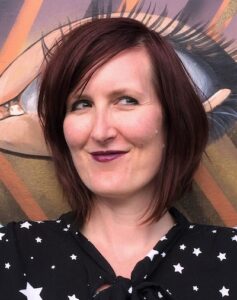
I have known Thea Wirsching for a few months and my respect for her intellect and deep knowledge of tarot and astrology and their place in American History continues to amaze. Her advice and her singular project entitled the American Renaissance Tarot was one of the guides and inspirations for our own Ufology Tarot. She recently gave a fascinating lecture at the Philosophical Research Society about the esoteric roots of Edgar Allan Poe.
We talked about her path to her doctorate in English and her dissertation on the hermetic and the occult roots of American culture, particularly in the 19th century. In academia, she pointed out, “the occult is transgressive” and “conjures up the devil” for many, which made her degree more difficult to accomplish. She said that academics often “do not allow the subjects studied the dignity of their beliefs” and we talked about how this might be changing.
Thea mentioned the African American occultist Paschal Beverly Randolph and his influence on Aliester Crowley and that he quite possibly authored the first vampire novel. He was part of a very real and important brand of American hermeticism that influenced occult movements worldwide, and was disseminated through fiction and writers such as Melville, Hawthorne, Thoreau, Emerson, and Whitman and ended up in the teachings of Theosophy and the practice of Spiritualism (which itself was an American phenomenon which spread worldwide.) These authors and others, as well as significant figures from American history play important roles in the American Renaissance Tarot deck and book.
She emphasized that while U.S. history is filled with triumphs and horrors, that we must look at the negative as well as the positive in order to make peace with it and change for the better.
22 March 2023, 10:23 pm - 1 hour 39 secondsMorgan Knudsen – Making the Paranormal Normal
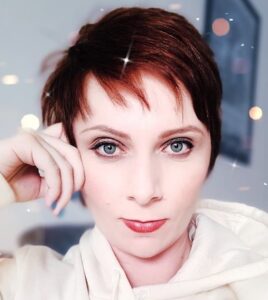 Morgan Knudsen is on a mission to normalize what is commonly referred to as the “paranormal.” For over 20 years she has researched, experienced, and lectured and taught classes on hauntings and psychic functioning. She founded Entityseeker Paranormal Research & Teachings in 2003, co-hosts a podcast called Supernatural Circumstances, and has been featured on countless radio and television programs and has written two books: Teaching the Living, and The Gift of Instinct.
Morgan Knudsen is on a mission to normalize what is commonly referred to as the “paranormal.” For over 20 years she has researched, experienced, and lectured and taught classes on hauntings and psychic functioning. She founded Entityseeker Paranormal Research & Teachings in 2003, co-hosts a podcast called Supernatural Circumstances, and has been featured on countless radio and television programs and has written two books: Teaching the Living, and The Gift of Instinct.For this first RM show of 2023, we began with the inspiration of her great great grandfather Albert Durrant Watson, who was president of the Canadian Association of Psychical Research in the early 20th century. Morgan’s main goal is to let her audiences know that psychic events and abilities are normal and pervasive. She emphasized that, especially in this realm, we get and experience what we expect, adding, “If people could connect to this in a way that is beneficial, your life really does change.”
We spoke on how many paranormal events happen to people who don’t expect it or don’t care or just when they turn off equipment. Knudsen spoke about the “power of giving up,” adding, “As soon as you let go, you stop the resistance to what’s trying to happen.” She also surprised me with her take on the general reaction of her fellow Canadians towards these subjects, which tends to be conservative and almost dismissive.
8 February 2023, 7:27 pm - 1 hour 36 minutesChris Aubeck – A History of Alien Artifacts

Chris Aubeck’s previous book, co-authored with Jacques Vallée, was entitled Wonders in the Sky, published in 2010. It was a comprehensive examination of aerial phenomena reports from antiquity to the year 1879. His new title is Alien Artifacts: From Antiquity to 1880: The Forgotten Story of How We Came to Believe in Visitors From the Stars. The book describes the long and intricate history of ideas about extraterrestrial worlds and their inhabitants. The examples stretch back to ancient Greece and include the first speculations on the origins of the ancient alien theory, the first ideas of extraterrestrial craft, original accounts of what we would know today as flying saucer contactees, and even the racist origins of ideas about superior beings. Chris says he’s been told that his research is “like drawing back a curtain to reveal a long forgotten history of an obsession we thought was new.”
In his first appearance on the show in over 6 years, Chris described his research into the history of ideas about extraterrestrials in archives. libraries, and the internet, and how he has discovered that “we’ve read so much into it based on our expectations.” Many UFO stories in the 19th century and before were invented as fiction or to sell newspapers and other printed media, but many of them contain quite modern elements, such as ideas about alien artifacts and writing, and even elements of abduction stories. Aubeck says that this is not proof that UFO sightings and encounters are made up, but that we need to look at cultural contexts and antecedents for them to gain perspective. We also discussed the writings of 18th century Swedish mystic Emanuel Swedenborg, and his descriptions of people from other planets that contain many elements that would appear in 20th century UFO contactee literature. Another fascinating tangent was the strange (to us) theory beginning in the 19th century, that meteorites had arrived from other worlds carrying flora and fauna, sometimes still living.
(Song credit: “They’re Here” by Boots Walker)
19 December 2022, 8:26 am - 1 hour 11 minutesClas Svahn – Archiving The Unexplained
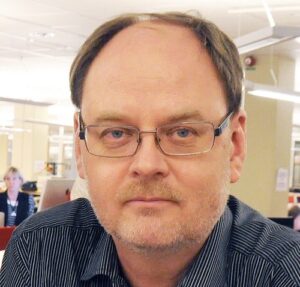
Clas Svahn is a journalist by profession, and also the Chairman of the Archives For The Unexplained, located in Norrköping Sweden. The AFU is dedicated to collecting materials about UFOs, ufology, Forteana, cryptozoology, paranormal phenomena and folklore. It is a nonprofit foundation, and the collections comprise approximately 3.5 kilometers of shelf space in 15 different locations. The collections include over 55,000 books in various languages, 88,000 magazine issues representing 8,000 annual magazines, 650,000 newspaper clippings, 30,000 photographs, films, and tape, vinyl records, as well as memorabilia, scale models, paintings, paraphernalia, posters, clothes, toys, and other items.
Clas has written a book about the archives, entitled “Files of the Unexplained,” which is basically a tour of the archives and some of its rare and unusual holdings. We spoke about the beginnings of the archive, and how Svahn and his staff scour the globe for collections of books and other ephemera. He says he brings in about 2 tons of material every year. Svahn says he “doesn’t take no for an answer” when hunting down obscure material and has even retrieved material from dump sites after relatives told him they disposed of valuable collections. Amazingly, the AFU also holds records of the Scole experiment.
Svahn also told me that he spent a day with famous abductee Betty Hill and learned that she claimed to have seen a UFO crash years before her famous abduction and even to have picked up pieces of the craft.
19 December 2022, 8:00 am - 1 hour 14 minutesJeff Kripal – The Superhumanities
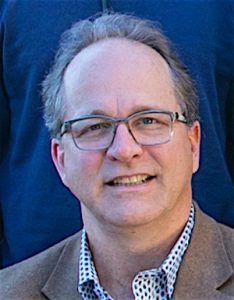
To me, Jeff Kripal’s new book, The Superhumanities is a call to action and a radical reassessment of not just the humanities, but what it means to be human and the potential of what it could mean. You cannot skim this book. It is one of those rare volumes where every sentence and every word is essential. Kripal also eschews the language of the academy for a style that is accessible to any interested reader. Jack London said that good writing is clear thinking written out. Jeff Kripal’s writing and indeed this newest book is a prime example.
Jeff says that the word “Superhumanities” is a “nerdy expression” that he made up for a segment of the humanities with an accent of altered states of consciousness or altered states of knowledge that have produced extraordinary results in such areas as art, literature, philosophy and activism. These methods of perception and inspiration have been routinely ignored or even suppressed by academia and the sciences. He sees the reason that we hold on to outdated attitudes on the uncanny or paranormal are so “we can have our conclusions.” In other words, the worldviews of many of us (especially in academia, the sciences, or news media) is due to the desire to keep things out rather than challenge assumptions. When we talked about the role of science in looking at anomalies, Jeff came up with a great phrase: “Using science to look for the paranormal is like going to the north pole to find zebras.”
25 October 2022, 10:35 pm - 1 hour 51 minutesMichael Masters – The Extratempestrial Model
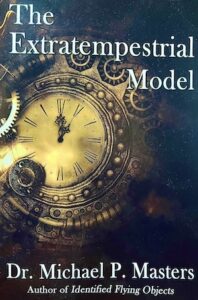 Dr. Michael Masters is a professor of biological anthropology at Montana Tech in Butte, Montana. His 2019 book was Identified Flying Objects: A Multidisciplinary Scientific Approach to the UFO Phenomenon, which hypothesized that ‘UFOs’ and ‘Aliens’ are our human descendants returning from the future, and which we discussed on RM. His new book, The Extratempestrial Model, analyzes many cases of abduction and other types of contact, as well as other theories that attempt to understand the UFO enigma.
Dr. Michael Masters is a professor of biological anthropology at Montana Tech in Butte, Montana. His 2019 book was Identified Flying Objects: A Multidisciplinary Scientific Approach to the UFO Phenomenon, which hypothesized that ‘UFOs’ and ‘Aliens’ are our human descendants returning from the future, and which we discussed on RM. His new book, The Extratempestrial Model, analyzes many cases of abduction and other types of contact, as well as other theories that attempt to understand the UFO enigma.As usual with Mike, we ranged far and wide in our discussions, touching on such subjects as the (in)accessibility of the MUFON database, and the inscrutability of Terence McKenna, but we soon moved into the subject matter of his newest book. Mike argued that the famous “grandfather paradox” of time travel is not true if we use the idea of a “block time” reality, where everything exists simultaneously, and all seeming paradoxes are accounted for: “Everything you did before you left was already there.” He brought up the theoretic concept of “closed timelike curves” which would allow backwards time travel without violating the laws of Special Relativity.
We also touched on a few of the cases discussed in the book and how they apply to the extratempestrial model, such as the recurring contacts of Mike and Leo Dworshak, which they say began in 1932. Mike also theorized about certain points in time existing as “ports” for embarkation, just as they are in space.
In the end, we spoke on the conundrum of how academics and others reach a certain point in the study of UFOs where they cannot go back to all of their old models and denials of the phenomenon.
20 October 2022, 10:55 pm - 2 hours 1 minuteJoshua Cutchin – The Ecology Of Souls
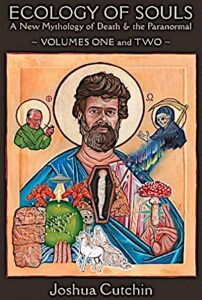
Joshua Cutchin’s new book Ecology of Souls: A New Mythology of Death & the Paranormal is a combination of “I knew that” and “How did I not know that?” for me. It seemed that rather than being a rare and ephemeral thing, that placing the UFO experience in the context of something eventually encountered by everyone, namely death, that the seemingly inexplicable is almost normalized.
The title came from a quote by Whitley Strieber’s late wife Anne, who said that the UFO and abduction experience “has something to do with what we call death.” Josh took that concept and unfolded it into a two-volume, encyclopedic work that will be a reference for years and probably decades to come.
We discussed the concept of “psychopomps” and how they are analogous to what we term as “aliens,” the prevalence of animals and beings with animal heads in abduction and close encounter reports, and the idea of the UFO itself as a symbol of transport, such as the boat that carries the souls across the river of death in many mythologies. The research into and writing about these ideas and many others Josh said were “an absolutely transformative experience in many ways with some of the most profound synchronicities I’ve ever had.”
18 July 2022, 3:07 am - 1 hour 35 minutesPaul Smith – Remote Viewing: Insight and History
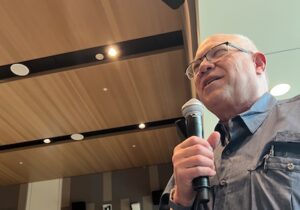
I met remote viewing pioneer Paul Smith at the recent Archives of the Impossible conference in Houston, TX in March. We hit it off immediately and I suggested he come on RM.
Smith has been teaching remote viewing (RV) techniques to the public for longer than anyone in the business. He was recruited to the U.S. Army’s State Gate RV program in 1984 as one of the first class of students under the tutelage of famed psychic Ingo Swann. Paul said that there were no “psychic tests” used for choosing who would be tapped for training, and candidates were chosen for their scores on tests that included questions about their artistic interests and talent. The idea being that a developed right brain/ creative mind would be more apt to possess the characteristics needed. Smith recalled that the US Military was worried that the Soviet Union had spent about $220 million on psychic research before the Americans had even started, and that this was the impetus for Star Gate. The U.S. ended up investing only $25 million over 23 years.
We spoke about the history of Swann’s development of the program from the beginning, and how he “mixed art and science” in his techniques. Smith pointed out that the human mind is very fond of making sense of incomplete input and that the training “gives the left brain something to do that it’s good at,” namely categorizing and logging input and letting the right brain concentrate on receiving sensory impressions and shapes and forms.
We also discussed the history of the RV program and some of the personalities involved, such as Lyn Buchanan, Joe McMoneagle, Ed Dames, and a little-known early RV recruit named Tom McNear, whom Swann called his “best ever student.”
Photo: Smith asks a question at the Archives Of The Impossible Conference on 3/5/22.
Outro music: “Sacrifice of a Hero” by Paladine.
27 May 2022, 1:10 am - 40 minutes 30 secondsThe Tarot Part of the Ufology Tarot
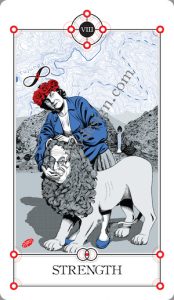
The interviews so far for our card project have concentrated on the Ufology” part of the process and philosophy of creating these images. In this interview, our resident tarot and occult expert and team member Susan Demeter joined Miguel Romero and I to discuss the symbology behind the artwork and how we are adapting the standard Rider-Waite-Smith deck to tell the story of Ufology and the phenomenon that it studies. We took particular time with the evolution of the “Strength” card, featuring researcher Anne Druffel, and why we chose the symbols for Key 8.
The Kickstarter campaign closes on November 30, so if you have been hesitating to join us, have a look and help out if you want to be one of the few who receive the first 22 cards and a discount on the rest of the deck when it is complete.
We will soon return you to our irregularly scheduled program!
23 November 2021, 11:38 pm - 41 minutes 19 secondsIntroducing the UFOLOGY TAROT!
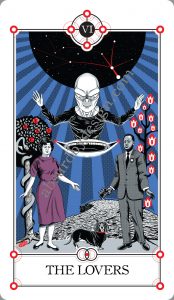 A small group has been working for over a year to bring a project to light, and it has finally appeared this week as the Ufology Tarot. This stems from an idea I had a few years ago to encode notable Ufologists, witnesses, and cases in a system of tarot in order to honor, examine, and especially connect them with directly with the user/ reader on a level that a simple book alone cannot hope to accomplish.
A small group has been working for over a year to bring a project to light, and it has finally appeared this week as the Ufology Tarot. This stems from an idea I had a few years ago to encode notable Ufologists, witnesses, and cases in a system of tarot in order to honor, examine, and especially connect them with directly with the user/ reader on a level that a simple book alone cannot hope to accomplish.Joined by my friends Miguel Romero, Joshua Cutchin, Susan Demeter, and David Metcalfe, we met periodically and strategized, debated, and sought out history and sources of information, archetypes, and concepts to make these cards a reality.
In this program, David, Josh, Miguel and I discuss the genesis of the project and the ideas behind it. The program was recorded barely 3 hours after we launched the Kickstarter campaign on October 31st.
Please help us bring the first 22 cards (also known as the major arcana) to life! The 56 minor cards, with more deep dives into the history of the UFO subject, will be available through a separate funding campaign after the first phase completes in about 1 year.
THANK YOU! We are excited to finally share this project with all of you.
5 November 2021, 7:28 pm - More Episodes? Get the App
Your feedback is valuable to us. Should you encounter any bugs, glitches, lack of functionality or other problems, please email us on [email protected] or join Moon.FM Telegram Group where you can talk directly to the dev team who are happy to answer any queries.
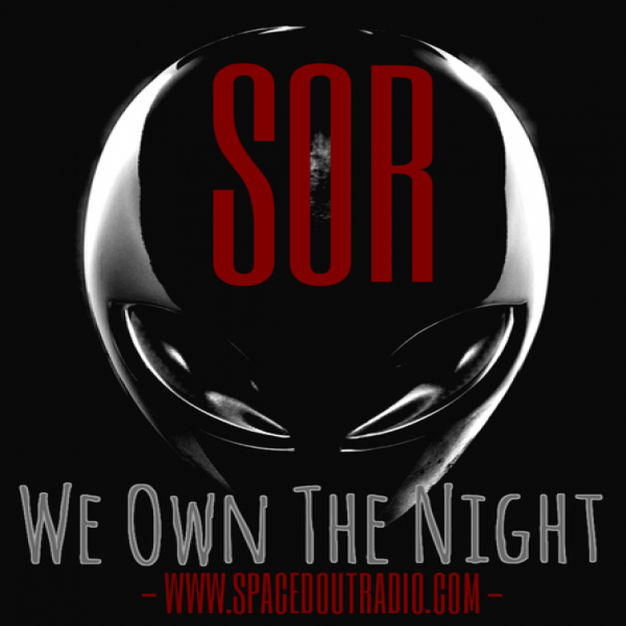 Spaced Out Radio Show
Spaced Out Radio Show
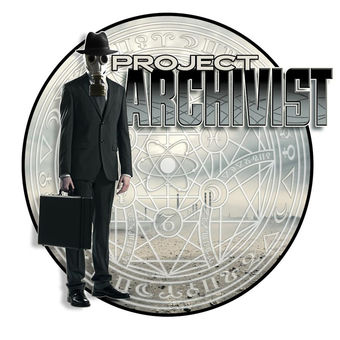 Project Archivist
Project Archivist
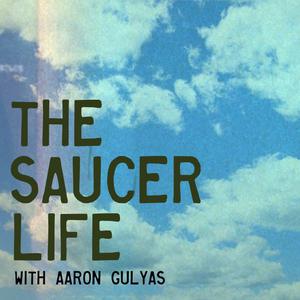 The Saucer Life
The Saucer Life
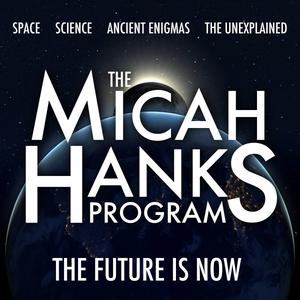 The Micah Hanks Program
The Micah Hanks Program
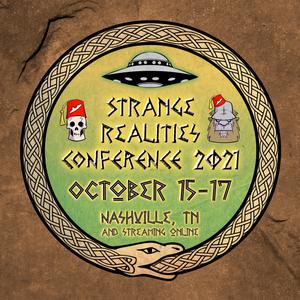 Conspirinormal Podcast
Conspirinormal Podcast
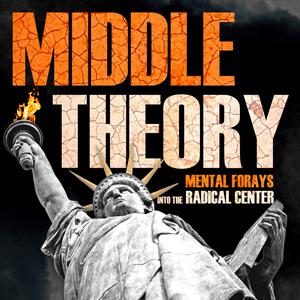 Middle Theory
Middle Theory